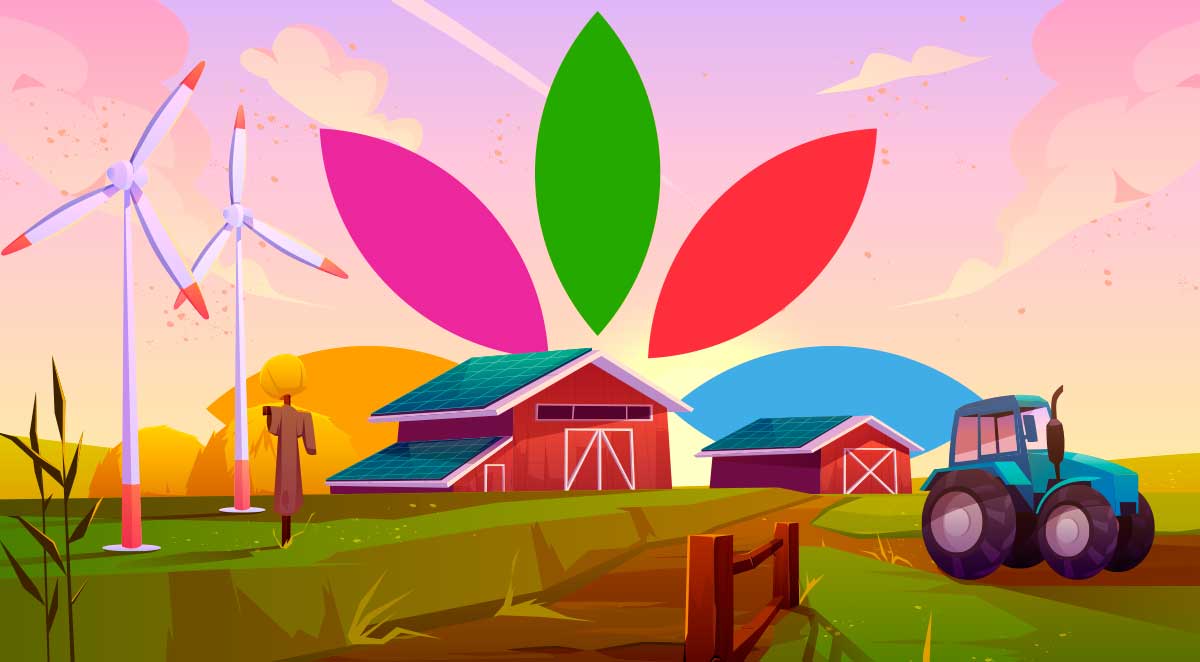Use of renewable energy at farm level

One of the challenges faced by sustainable agriculture is the fact that the majority of farms rely on fossil energy for traction and electricity. Fossil energy for mechanized agriculture has been an important driver of the “Green Revolution” to increase farm productivity and it has been proved to be difficult to move agricultural practices away from this paradigm in relation to the fuel type used.
Today, three major energy inputs (diesel fuel, fertilizer and electricity) account for more than three-quarters of the farm energy use [1].
Many different forms of renewable energy can be produced in rural areas, ranging from wind, solar and geothermal to different forms of bioenergy. Wind and solar energy generation have significantly improved in recent years and there is a significant range of equipment available on the market. The generated electricity is mainly used for water pumps, irrigation, lighting and other equipment.
Farms possess important resources such as biomass that can be converted to bioenergy by different technologies ranging from bio digestion to burning. However, these resources are often neglected. Biomass includes crop residue, organic material and manure. Besides the presence of biomass, it is just as important, that farms possess open space that is suitable for renewable energy production: for the installation of solar panels, windmills, or small water dams/reservoirs.
Technologies are available to meet energy use on the farm required for heating, cooling and transport. Additionally, excess production of renewable energy (in the form of electricity or biogas) may be delivered to power or gas grids, which for smallholders can represent an additional source of income. In countries such as the USA, increased concerns about energy security, greenhouse gas emission, pollution, as well as the desire to support small-scale farms have led to an increase in renewable, agriculture-based fuels or biofuels (including ethanol and biodiesel)1.
Some examples to generate renewable energy in agricultural areas include:
- Wood-based energy systems for mobile heating units (e.g. for seasonal grain drying);
- Energy storage techniques (high water reservoirs) and energy control systems for farm energy-intensive operations (heating, ventilation, lighting, feed preparation, etc.);
- Upgrading biogas into biomethane and combining biogas with small-scale ethanol production;
- Heat used to warm greenhouses or to dry fruits and vegetables can be produced from the combustion of biomass or provided from solar thermal-, geothermal- and bioenergy heat generation plants, or heat pumps;
- Cooling and cold storage necessary to maintain food quality after harvesting, typically based on refrigeration systems that depend on electricity supply, could use electricity produced by technologies such as solar-powered absorption chillers[2].
An important aspect – in the case of heating and cooling operations – is efficiency in order to reduce the losses within a system (for example a good insulation system, door permanently closed, etc.).
Case studies published by the EIP-AGRI Focus Group ‘Renewable energy on the farm’[3] show that there are a variety and combination of factors promoting successful implementation and use of renewable energy on farms. However, success often depends on whether new technologies are easily accessible for farmers. Support, such as training and capacity building, investments, grants or subsidies, is an important enabling condition. Barriers (economic and regulatory) often hamper further scale-up of renewable energy on farms.
The ProTerra Foundation believes that the application of renewable energy has a great potential to contribute to the objectives of sustainable agriculture. Farmers can make a significant contribution to energy supply and climate change mitigation, playing a role in the production and consumption of different renewable energies. Improving energy efficiency by managing agricultural inputs better can effectively reduce agricultural greenhouse gas emissions as well as the cost of production, particularly in smallholder farming systems.
The ProTerra Standard V4.1 includes several indicators related to this topic. Organizations should adopt practices over time to minimize the use of energy from non-renewable sources and to derive an increasing proportion of their energy from renewable sources such as solar and wind, or from local, recycled materials.